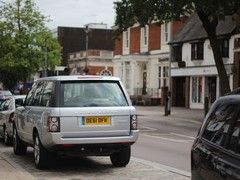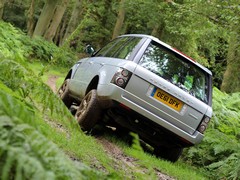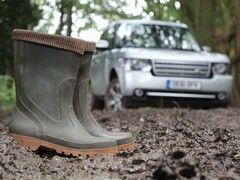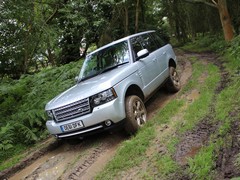Farewell Range Rover
The new Range Rover is almost upon us but we still rather like the old one - enough to bid it a fond farewell
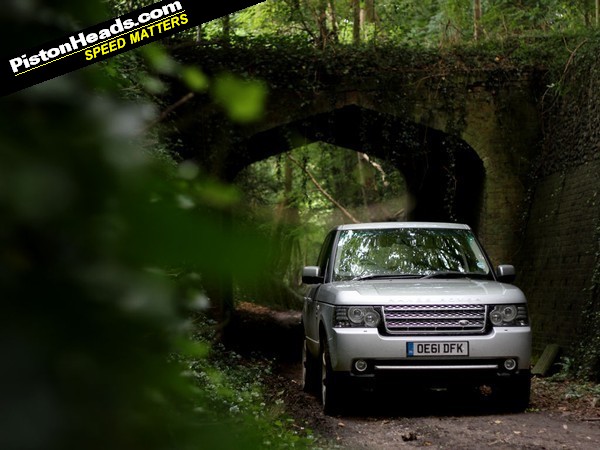
Recently – and in private - a senior exec from the Jaguar side of the JLR fence referred to the Range Rover as the company’s cash cow, which always seems a slightly pejorative description but reflects the truth of who brings the money in. Porsche refers to the Cayenne in the same terms, the seemingly insatiable demand for such cars in markets like China doing wonders for the bottom line of both companies.
Given that it’s little wonder the new Range Rover is bigger and blingier than before. And perhaps less in touch with the land of its birth than the outgoing one as a result. Fine, that’s the way the market is going and the business case is clear. But that uniquely British identity is strong in the outgoing L322, and is worth celebrating.
Milking it
And is, of course, one of the reasons the Range Rover is so popular in the first place. The basic story is oft-told but, for the sake of setting some context, started with Rover engineers looking at the growing trend for crude but versatile ‘civilian’ 4x4s in the US. Using this as a springboard they came up with a ‘100-inch station wagon’ concept, V8 powered, suspended on coil springs, aluminium bodied and, initially, hose-out basic. Intended, according to project leader Spen King, for “senior officers in the army, head guys on building sites, well-off farmers and that sort of person” demand for increased luxury came quickly, not least from the palace, concerned that the exposed tool kit in the boot might cause injury to Corgis flung about by her majesty’s noted no-nonsense driving.
The L322 launched back in 2001, an age ago in model-cycle terms. The first Range Rover with independent suspension and unitary construction the fact that, over a decade later, sales are enjoying a surge (18,240 in 2009, 23,602 in 2010 and 29,626 in 2011) shows quite how good a job was done. And the size of the shoes the L405 has to fill.
Before we go bonkers for the new one though how does the last of the line L322 measure up? Updates, engines, trims and whatnot have been introduced throughout the Rangie’s lifespan, new JLR petrol V8s in 2009 and the mighty new 4.4-litre TDV8/eight-speed auto combo in 2010 among the more significant.
Derve with verve
That we love a V8 Range Rover here is no secret. But a diesel one? We’ll make an exception in this case, the Range Rover’s engine justifying – just – that much over-used adjective ‘epic’.
It was the availability of the Buick-based Rover V8 that sealed the deal on the original Range Rover concept back in the late 60s. Appropriate then that we should still have such an engine under that castellated bonnet, this parallel-turbo'ed, quad-cam, 313hp monster a world away from that original 156hp, 3.5-litre chugger. That was eight speed too, but you’d have to engage low-range to get the spread of gears the ZF slips through with snooty disregard these days.
Whisper it but you’d have to really, really hate diesel to choose the supercharged petrol version over this, the TDV8 comfortably capable of 30mpg-plus while dishing out just a hint of warbly V8 under hard acceleration. It is mighty too – over a second quicker to 62mph and from 50-70mph than the 3.6-litre/272hp TDV8 it replaces. The fact you can indulge in this without watching the fuel gauge plummet in inverse relation to the speedo is a novelty previous generations of Range Rover owner can only marvel at.
Give it some (green) welly
The Range Rover of 1970 was crafted to meet green-wellied aspirations of Spen King’s posh farmers and retired generals. That its modern equivalent is geared up to soothe in stop-start M25 traffic and city streets is a reflection of how life has changed but, hell, in this respect the TDV8 nails the needs of motoring in modern Britain perfectly. And, somehow, even in the most tedious of traffic jam there’s just that spark of character to lift your mood a little above those around you. Sure, there are rivals now. But even with nods to the blingier tastes of a new breed of owners there’s an inherent classiness and old-money charm no Q7 or Cayenne could hope to replicate.
Rear-seat screens or not, those in the back of the L322 aren’t as well catered for as those in the front and this will be one of the major improvements in the new Rangie. But at the helm – an appropriate description in this case – there’s little to complain about. Sure, some of the details are a decade behind the competition but it’s the overall experience that makes the L322 such a pleasure to be in.
Move along…
It does little for your sense of humility but the way it literally elevates you above the hubbub is incredibly soothing. If the Range Rover is about meeting the needs of British drivers the way it pats speed bumps, potholes and rubbish road surfaces on the head and sends them on their way is most appropriate, there being just enough pitch and roll in the L322’s chassis to remind you of its roots as a proper off-roader. A Sport will happily go chasing Cayennes and their ilk but the L322 still feels like a proper Range Rover and you have to hope that in the claimed pursuit of improved and – shudder – sportier handling in the new one doesn’t gloss over that. Stereotype or not, the kind of sportiness a Range Rover symbolises is best observed from the tailgate, not chasing down AMG MLs on the Nordschleife.
Nor do you need to lavish the near six-figure money demanded for this one to enjoy these delights. Plenty lurk in the PH classifieds, waiting to tempt you with sub-£10K pricetags. Which for a car that could hold its head up high alongside brand-new metal is pretty damned tempting, fuel bills be damned…
Range Rover time line:
1966 – Works starts on the ‘100-inch station wagon’
1970 – Range Rover goes on sale
1981 – First four-door Range Rover goes on sale
1982 – Automatic transmission available
1987 – Range Rover goes on sale in America
1994 – ‘P38a’ second-gen Range Rover goes on sale
1996 – ‘Classic’ Range Rover production ends after 317,615 sales
2001 – L322 Range Rover launched
2005 – Range Rover Sport launched
2009 – New V8 petrol engines introduced
2012 – Fourth-gen L405 Range Rover revealed ahead of Paris debut
RANGE ROVER TDV8 AUTOBIOGRAPHY
Engine:4,367cc V8, twin-turbo
Transmission: 8-speed auto, four-wheel drive
Power (hp):313@4,000rpm
Torque (lb ft): 516@1,500rpm
0-62mph: 7.8 sec
Top speed:130mph
Weight:2,580-2,810kg (quoted)
MPG: 30.1mpg (NEDC combined)
CO2: 253g/km
Price: £84,320 (£90,595 as tested)
Gassing Station | General Gassing | Top of Page | What's New | My Stuff

